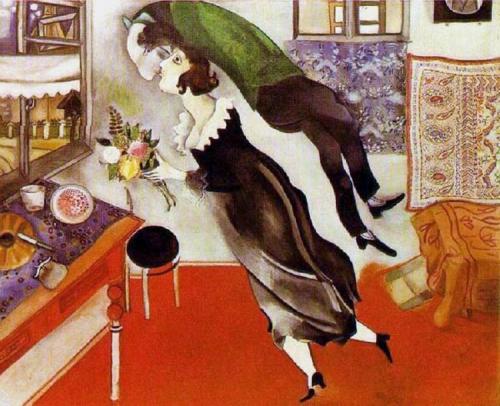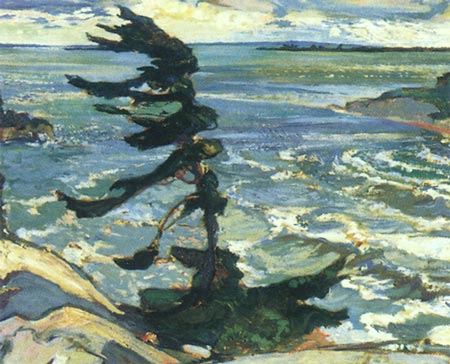
Further to Michael’s post
“I must run across to the Louvre now, as it is getting late. The mob always goes straight to the Mona Lisa as the greatest drawing card. I’m a little annoyed with Leonardo just now. That miserable Bacchus and John the Baptist—which are of course open to doubt as to their authenticity—with their sickly smiles and their rather cloying chiaroscuro” (Frye to Helen Kemp. 25 September 1938)
Two years earlier Frye had reported to Helen on his visit to the Art Institute in Chicago: “The Art Institute has a special exhibit which I have visited twice, once with [my sister] Vera, once with Eleanor [Craig]. Renaissance painting–Tintoretto, Titian, two Leonardos‑‑one called the “Madonna of the Yarn Spinners,” a magnificent Italian Madonna, with the same inscrutable Mona Lisa smile, and the freshest and rosiest youngster I have ever seen. Some of the representations of the Christ‑Child are almost blasphemous‑‑he looks sometimes like a manikin of forty, sometimes like a wizened old priest. One Raphael‑‑very simple but breath‑taking‑‑a man dressed in black. Two Botticellis‑‑one I could have sworn was modern French. Our old friend Lippo Lippi, and one of his incubi, Fra Angelico. (Try your hand at Fra Lippo Lippi sometime, contrasting the medieval type with Early Renaissance in initial letters or marginal designs.) The Renaissance pictures were all very soft and quiet in color. But the medieval ones were different. Nearly all of them had gold backgrounds, and the figures were splashes of brilliant reds and greens. The haloes were bewilderingly ornamented. Poses stiff and architectural, often notably Byzantine. But a sort of quaint childlike humor all through. One picture of the Last Supper shows a little spaniel in the foreground gnawing a bone. One Madonna and Child shows the latter with his fist stuck in a dish of candy. A weird one of John the Baptist’s head brought to Sabine has a moving picture effect. The head appears twice, and so do three attendants, at different stages in the procession. I liked these medieval pictures best of all, I think. Then the Dutch school. Some rare humor here too. One a young group of smokers trying to blow rings. A beautiful Rembrandt‑‑“Girl at Half‑open Door” and a portrait of his father. Several Franz Hals‑‑all the “Laughing Cavalier” type. And an exquisite picture of a “Woman Weighing Gold.” And so on. The Dutch primitives disappointed me a bit. There is an English room‑‑several graceful Gainsboroughs, a Romney, Reynolds, Raeburn, Zoffany, and Hogarth. American colonial painting, including the two famous Gilbert Stuart portraits of Washington. Whistler‑‑the great portrait of his mother‑‑one of the biggest attractions‑‑a superb picture in gray and black. And the Thames “nocturne”‑‑the one that started the row with Ruskin. Sargent‑‑a lovely study of an Egyptian nude girl‑‑surprisingly slim for the Orient. Modern French too‑‑a room full of Matisse and Picasso. That man Matisse knew how to handle color. A picture of Picasso’s of a youngster eating out of a bowl called “Le Gourmet” is very popular‑‑Eleanor said it was her favourite” (Frye to Kemp, 1 July 1933).
From Northrop Frye’s Student Essays: “The relation of the artist to the scientist boils down to one very similar to his relation to the moralist or propagandist. The scientist explains, and his words and images denote; the artist suggests, and his words and images connote. No two people will look at a picture in the same way; and if I am looking at one, all the other possible reactions to it, which I may or may not share, form a sort of nimbus around my head, which I try to get away from. If I am looking at Mona Lisa, for instance, I withdraw into myself in order to escape from both Walter Pater, except by responding to a meaning in the picture essentially “evocative” and “spell‑bearing” (CW 3, 377).
Continue reading →





